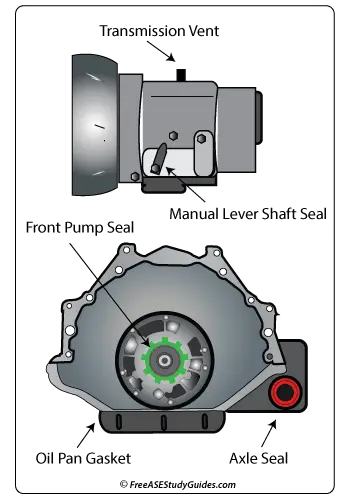Transmission Fluid Leak Check

Perform oil leak checks after inspecting the condition and level of the ATF (automatic transmission fluid). Transmission fluid can become discolored and turn brown, similar to oil. After checking the condition and level of the fluid, raise the vehicle on a hoist. Inspect areas where parts meet, like the oil pan, around the pump, torque converter, and extension housing. Overheated, aerated, or overfilled fluid levels leak from the dipstick tube and transmission vent. Look behind the torque converter cover for a leaking oil pump seal and visually inspect the axle seals for leakage.

Fluid levels affect fluid flow and pressures. Low fluid levels result in air being drawn into the oil pump passages, contaminating the fluid with tiny air bubbles. This condition is referred to as aeration and results from low or high fluid levels. When the fluid level is high, the spinning planetary gearsets aerate the fluid, resulting in clutch and band slippage. It results in buzzing sounds from pressure valves and affects valve, clutch, and TCC operation.
Check for varnish on the dipstick. Varnish appearing on the dipstick indicates fluid oxidation. Oxidation coats interior parts and causes shift and pressure valves to stick.